Stroitel`nye Materialy №11
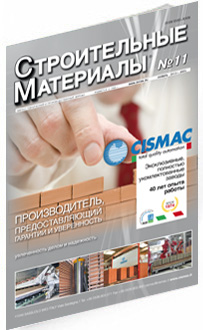
November, 2012
Table of contents
I.F. SHLEGEL, Candidate of Technical Sciences, General Director, the Institute of New Technologies and Automation of the Industry of Construction Materials (OOO “INTA-STORY, Omsk)
Results of the study of the process of pressing of bricks from press-powders of different moisture content are presented. The conclusion about the prospectiveness of this method of production of high quality bricks is made. The article contents the critique of the traditional scheme of semi-dry pressing and proposals for optimization of green brick drying before burning. Keywords: semi-dry pressing, pressure, ceramic brick, dryers.
S
ome Aspects of Semi-Dry Pressing of BricksResults of the study of the process of pressing of bricks from press-powders of different moisture content are presented. The conclusion about the prospectiveness of this method of production of high quality bricks is made. The article contents the critique of the traditional scheme of semi-dry pressing and proposals for optimization of green brick drying before burning. Keywords: semi-dry pressing, pressure, ceramic brick, dryers.
A.M. SALAKHOV, Candidate of Technical Sciences, Deputy General Director for research, V.N. GERASHCHENKO, engineer, R.A. SALAKHOVA, Candidate of Technical Sciences, the Association of Ceramic Wall Materials Manufacturers (Moscow); V.P. MOROZ, Doctor of Geological-Mineralogical Sciences, the Kazan (Volga region) Federal University; R.R. KABIROV, engineer, General Director, OAO “Alekseyevskaya keramika” (Republic of Tatarstan)
Research in possibility and reasonability of production of ceramic with high content of calcium silicates is presented. Features of chemical and mineralogical compositions of tripoli from the Novo-Aybesinovskoye Deposit are given; the high sensitivity to ultrasonic treatment, which results in dramatically increasing the share of particles with the size less than one micrometer is revealed. It is shown that the stability of the phase composition within the wide range of temperatures in combination with high strength properties of ceramic stone is a base of the energy saving technology of facing brick with a high content of calcium silicate.
Keywords: ceramics, calcium silicates, energy saving technologies, untraditional technologies
V.E. MANEVICH, Doctor of Technical Sciences, Deputy Director for research, “Stromizmeritel” Closed JSC (Nizhny Novgorod); E.A. NIKIFOROV, Candidate of Economic Sciences, Chairman of Board of Directors, A.L. VINITSKY, Candidate of Technical Sciences, Deputy Chairman of Board of Directors, PIK “Diatomit-Invest”(Ulyanovsk); A.V. MESHKOV, N.A. SENNIK, engineers (meshkov88@gmail.com; tomsk.nina@sibmail.com), the National Research Tomsk Polytechnic University; R.K. SUBBOTIN, engineer (sur_ruy@mail.ru), the D. Mendeleyev University of Chemical Technology of Russia (Moscow)
The technology of production of high-performance heat insulation material is described. Features of the preparation of foam-forming mixes on the basis of glass from diatomite with the use of a ball mill and a planetary-type mill are considered; the dependence of the volume weight of ready-made foam glass on the size of a specific surface and the type of milling equipment used is established. The composition of a mixture for glass melting and production of foam glass is presented.
Keywords: dispersion, foam-forming mix, foam glass, glass on the basis of diatomite, mechanical activation.
P.A. KETOV, engineer (347911@mail.ru), the Perm National Research Polytechnic University
An issue of silicate formation in the process of interaction between amorphous silicon oxide in the form of tripoli and sodium hydroxide solutions is considered. Conditions for the formation of binding compositions and mixture for production of cellular materials are revealed. In the process of heat treatment of the material obtained the gas release accompanying the process of glass melting can be used for creation of stable foams-foam glasses in the field of high viscosity of glass mass.
Keywords: polysilicates, binding properties, cellular materials, glasses
N.E. STAKHOVSKAYA, Candidate of Technical Sciences, A.I. CHERVONY, senior research scientist, State Enterprise “NIISM Institute” (Minsk, Republic of Belarus)
A heat-insulating material – foam glass – obtained from unsorted broken glass generated in the sphere of residential use is presented; some peculiarities of its production technology as well as technical characteristics of foam glass are given. Keywords: foam glass, unsorted broken glass, gasifier, silicon carbide, composition, physical-mechanical properties
A heat-insulating material – foam glass – obtained from unsorted broken glass generated in the sphere of residential use is presented; some peculiarities of its production technology as well as technical characteristics of foam glass are given. Keywords: foam glass, unsorted broken glass, gasifier, silicon carbide, composition, physical-mechanical properties
A.N. FILATOV, Candidate of Technical Sciences, T.N. VUDVUD, engineer, V.A. IVANENKO, Candidate of Technical Sciences, the Research Institute of Construction Work (Kiev, Ukraine)
An analysis of gas and foam methods of forming the porosity of a raw mix used in the technology of cellular concrete has been carried out. On the basis of this analysis the scientific and technical substantiation of combination of these two methods in one technology has been made.
Keywords: cellular concrete, foaming agent, gas-foam concrete.
An analysis of gas and foam methods of forming the porosity of a raw mix used in the technology of cellular concrete has been carried out. On the basis of this analysis the scientific and technical substantiation of combination of these two methods in one technology has been made.
Keywords: cellular concrete, foaming agent, gas-foam concrete.
E.V. LUKASH, Candidate of Technical Sciences, M.I. KUZMENKOV, Doctor of Technical Sciences, the Byelorussian State Technological University (Minsk)
Results of the experimental study connected with the development of a composition of non-autoclave foam concrete on the basis of magnesian cement produced from dolomite of the Ruba deposit are presented. It is shown that on a number of operational properties (activity, strength gain time et al.) the magnesian cement is not worse than Portland cement and taking into account the reduced (by 15-20%) power intensity of its manufacture technology it is a good perspective for the production of non-autoclave foam concrete. The influence of the type and composition of a foaming agent as well as various additives on the process of production and properties of foam concrete has been studied. It is established that the use of synthetic foam agents PB-2000 and Penostrom is an optimal variant for production of foam concrete. Keywords: non-autoclave foam concrete, magnesian cement, gas concrete, foaming agents
Results of the experimental study connected with the development of a composition of non-autoclave foam concrete on the basis of magnesian cement produced from dolomite of the Ruba deposit are presented. It is shown that on a number of operational properties (activity, strength gain time et al.) the magnesian cement is not worse than Portland cement and taking into account the reduced (by 15-20%) power intensity of its manufacture technology it is a good perspective for the production of non-autoclave foam concrete. The influence of the type and composition of a foaming agent as well as various additives on the process of production and properties of foam concrete has been studied. It is established that the use of synthetic foam agents PB-2000 and Penostrom is an optimal variant for production of foam concrete. Keywords: non-autoclave foam concrete, magnesian cement, gas concrete, foaming agents
V.I. MELEKHOV, Doctor of Technical Sciences, the Arkhangelsk State Technical University; V.E. BYZOV, Candidate of Technical Sciences, the St. Petersburg State Forest Technical University
Results of the study of timber microstructure of structural sawn timber of large sections with pitch inclusions are presented. Features of the macrostructure of sawn timber representing annual rings of wood co-axially strung on each other make it possible to apply propositions of the theory of elasticity of thin-walled cylindrical shells for studies of its strength characteristics. Keywords: structural sawn timber, thin-walled cylindrical shells, annual rings of wood.
Results of the study of timber microstructure of structural sawn timber of large sections with pitch inclusions are presented. Features of the macrostructure of sawn timber representing annual rings of wood co-axially strung on each other make it possible to apply propositions of the theory of elasticity of thin-walled cylindrical shells for studies of its strength characteristics. Keywords: structural sawn timber, thin-walled cylindrical shells, annual rings of wood.
S.I. VOZNY, V.K. KRYLOV, Candidates of Technical Sciences, "Technoplast" Ltd. (Moscow); S.M. EVTEEVA, Candidate of Technical Sciences, A.A. ARTEMENKO, Doctor of Technical Sciences, the Saratov State Technical University named after Yu.A. Gagarin
The article considers issues of theoretical and practical investigations connected with the development of formulations of thermoplast for road marking. It is shown that the regulation of concentration of technical wax in composition makes it possible to improve the temperature range of non-dirtying of road marking by 5-15 °C and ensure the increase of its operating life. Keywords: thermoplast, marking materials, polymeric base.
The article considers issues of theoretical and practical investigations connected with the development of formulations of thermoplast for road marking. It is shown that the regulation of concentration of technical wax in composition makes it possible to improve the temperature range of non-dirtying of road marking by 5-15 °C and ensure the increase of its operating life. Keywords: thermoplast, marking materials, polymeric base.
G.S. KARDUMYAN, Candidate of Technical Sciences, NIIZhB named after A.A. Gvozdev (structural unit of OAO “Scientific Research Centre “Construction”) (Moscow)
Advantages of the waterproofing system “White Bath” are considered. The technology of works execution and materials is described. Examples of objects are presented. It is concluded that the introduction of new technologies in Russia for construction of waterproofing structures without additional insulation (“White Bath” system) makes it possible to reduce costs and time for erection of construction objects under difficult soil conditions. Keywords: watertight reinforced concrete structures, without waterproofing, “White Bath” system, low-heat concrete, shrinkage compensation, crack resistance, concrete modifier “Embelit”.
Advantages of the waterproofing system “White Bath” are considered. The technology of works execution and materials is described. Examples of objects are presented. It is concluded that the introduction of new technologies in Russia for construction of waterproofing structures without additional insulation (“White Bath” system) makes it possible to reduce costs and time for erection of construction objects under difficult soil conditions. Keywords: watertight reinforced concrete structures, without waterproofing, “White Bath” system, low-heat concrete, shrinkage compensation, crack resistance, concrete modifier “Embelit”.
B.K. SARSENBAEV, Doctor of Technical Sciences, Director, NII Construction Materials and Construction, M. Auezov SKSU; T.A. MOMYSHEV, engineer (nurali_777@mail.ru), T.U. ISKAKOV, Doctor of Technical Sciences, N.B. SARSENBAEV, T.S. AUBAKIROVA, engineers, the M.O. Auezov South Kazakhstan State University (Shymkent, Republic of Kazakhstan)
The technology of production of a slag-alkali binder and results of the study of its properties are presented. The production of a pilot batch of the slag-alkali binder on the basis of phosphoric slag has been made. The technological regulations for production of concretes and products on the basis of the binder investigated have been developed.
Keywords: phosphoric slags, alkali component, heat-humidity treatment, slag-alkali binders.
G.N. ZADIRAKA, General Director, ZAO “NP “ZNAMYA” (Sverdlovsk Reg., Sukhoy Log); N.N. SHCHERBAK, Candidate of Technical Sciences, OAO TSNIIPromzdaniy (Moscow); S.M. NEYMAN, Candidate of Technical Sciences, Secretary of Technical-Economic Board, Chrysotile Association (Moscow); S.V. SOZINOV, engineer (sega1357@mail.ru), the Moscow State University of Civil Engineering
Data on the use of flat pressed chrysotile-cement sheets in coverings of bearing and waterproofing component are presented. The covering with different supporting elements, configuration of ventilation space, heating materials and additional waterproofing has been erected in the South-Ural Region over the production shop with sharp temperature-humidity drops. The conducted inspection of the covering state under complex temperature-humidity conditions makes it possible to recommend flat chrysotile-cement sheets to a wide market of heat-efficient construction in different regions of the country. Keywords: flat roof, chrysotile-cement sheet, bearing and waterproofing components of covering.
Data on the use of flat pressed chrysotile-cement sheets in coverings of bearing and waterproofing component are presented. The covering with different supporting elements, configuration of ventilation space, heating materials and additional waterproofing has been erected in the South-Ural Region over the production shop with sharp temperature-humidity drops. The conducted inspection of the covering state under complex temperature-humidity conditions makes it possible to recommend flat chrysotile-cement sheets to a wide market of heat-efficient construction in different regions of the country. Keywords: flat roof, chrysotile-cement sheet, bearing and waterproofing components of covering.
V.V. TYSYACHUK, Director, M.A. GUBAREVA, Head of Laboratory, A.A. KUPRINA, engineer-technologist, OOO "Ecostroimaterialy"; A.V. SVINAREV, Director, OOO “Experimental shop Ecostroimaterialy” (Belgorod)
Problems arising in the course of routine repairs of flat roofs are considered. Advantages of using the monolithic foam concrete for the repair of flat roofs are shown. The basic technological stages and equipment for the roof repair are described. Keywords: monolithic foam concrete, waterproofing, flat roof.
Problems arising in the course of routine repairs of flat roofs are considered. Advantages of using the monolithic foam concrete for the repair of flat roofs are shown. The basic technological stages and equipment for the roof repair are described. Keywords: monolithic foam concrete, waterproofing, flat roof.
S.N. LEONOVICH, Doctor of Technical Sciences, N.L. POLEYKO, Candidate of Technical Sciences, the Byelorussian National Technical University; S.V. ZHURAVSKY, Director, OOO “Belkalmatron” (Minsk, Byelorussia); Yu.N. TEMNIKOV, Candidate of Technical Sciences, Director, OOO “Kalmatron-SPb”( St. Petersburg)
Results of the study of the porous structure of concrete with use of “Kalmatron” system depending on conditions and periods of hardening as well as the content of a colmatage additive are presented. It is confirmed that with the lapse of time as a result of chemical reactions the colmatage of capillary pores takes place, concrete water absorption reduces, its watertightness and frost resistance improve. The results obtained are used for the production of reinforced concrete structures on which exclusive standards of watertightness and frost resistance are made. Structures in which the use of the “Kalmatron” system is the most efficient are determined. Keywords: colmatage additive, capillary pores, concrete, water absorption, frost resistance, reinforced concrete structures.
Results of the study of the porous structure of concrete with use of “Kalmatron” system depending on conditions and periods of hardening as well as the content of a colmatage additive are presented. It is confirmed that with the lapse of time as a result of chemical reactions the colmatage of capillary pores takes place, concrete water absorption reduces, its watertightness and frost resistance improve. The results obtained are used for the production of reinforced concrete structures on which exclusive standards of watertightness and frost resistance are made. Structures in which the use of the “Kalmatron” system is the most efficient are determined. Keywords: colmatage additive, capillary pores, concrete, water absorption, frost resistance, reinforced concrete structures.
A.N. ABYZOV, Candidate of Technical Sciences, OOO “Klyuchevskaya obogatitelnaya fabrika” (Dvurechensk, Sverdlov Reg.); V.M. RYTVIN, Doctor of Economic Sciences, OAO “UK “RosSpetsSplav” (Yekaterinburg); V.A. ABYZOV, Candidate of Technical Sciences, the South-Ural State University (Chelyabinsk); V.A. PEREPELITSYN, Doctor of Geological-Mineralogical Sciences, OJSC “Eastern Institute of Refractories” (Yekaterinburg); V.G. GRIGORIEV, Candidate of Physical-Mathematical Sciences, OAO “UK “RosSpetsSplav” (Yekaterinburg)
Results of the study of heat-resistant concretes on the basis of binders and fillers from ferroalloy industry slag are presented. Heat-resistant light concretes have been obtained with the use of fine grinded slag of metallic chrome smelting with a service temperature of 1200-1500 °C. Keywords: ferroalloy slag, heat-resistant concrete, heat-resistant properties, high-alumina cement, phosphate binder, refractoriness.
Results of the study of heat-resistant concretes on the basis of binders and fillers from ferroalloy industry slag are presented. Heat-resistant light concretes have been obtained with the use of fine grinded slag of metallic chrome smelting with a service temperature of 1200-1500 °C. Keywords: ferroalloy slag, heat-resistant concrete, heat-resistant properties, high-alumina cement, phosphate binder, refractoriness.
A.G. KASIKOV, Candidate of Chemical Sciences, V.V. TYUKAVKINA, B.I. GUREVICH, Candidates of Technical Sciences, E.A. MAYOROVA, engineer, the I.V. Tananaev Institute of Chemistry and Technology of Rare Elements and Mineral Raw Materials, Kola Science Centre of the Russian Academy of Sciences (Apatity, Murmansk Reg.)
The influence of products of slag recycling on basic properties and structure of magnesian stone is studied. It is shown that solutions of acid leaching of magnesia-ferrous dump slag are suitable for using as an additive favoring the improvement of water resistance and strength of a binder. The introduction of solutions of slag hydrochloric acid leaching into the composition of the magnesia binder favors the formation of magnesium trihydrochloride characterized by enhanced water resistance in cement stone. Keywords: magnesia binders, products pf slag leaching, water resistance.
The influence of products of slag recycling on basic properties and structure of magnesian stone is studied. It is shown that solutions of acid leaching of magnesia-ferrous dump slag are suitable for using as an additive favoring the improvement of water resistance and strength of a binder. The introduction of solutions of slag hydrochloric acid leaching into the composition of the magnesia binder favors the formation of magnesium trihydrochloride characterized by enhanced water resistance in cement stone. Keywords: magnesia binders, products pf slag leaching, water resistance.
V.V. BABKOV, Doctor of Technical Sciences, E.A. GAFUROVA, O.A. REZVOV, V.S. ASYANOVA, engineers, L.N. LOMAKINA, Candidate of Technical Sciences, the Ufa State Petroleum Technological University
Issues of the salt stains formation on the surface of external walls of buildings made of vibropressed concrete blocks are considered. The chemical and mineralogical composition of salt stains has been studies with the use of a scanning electron microscope and a diffractometer. Mechanisms of the salt stains formation are uncovered. Possibilities of using the hydrophobization as a method of cleaning of walls from salt stains are analyzed. Keywords: vibropressed concrete blocks, salt stains formation, salt stains, hydrophobization.
Issues of the salt stains formation on the surface of external walls of buildings made of vibropressed concrete blocks are considered. The chemical and mineralogical composition of salt stains has been studies with the use of a scanning electron microscope and a diffractometer. Mechanisms of the salt stains formation are uncovered. Possibilities of using the hydrophobization as a method of cleaning of walls from salt stains are analyzed. Keywords: vibropressed concrete blocks, salt stains formation, salt stains, hydrophobization.
N.I. SHESTAKOV, Doctor of Technical Sciences, K.V. AKSENCHIK, engineer (akskos@mail.ru), the Cherepovets State University (Vologda Reg.)
Results of the study of thermo and moisture tensions arising in concrete slabs in the process of heat-moist treatment in trench steam curing chambers are presented. Dangerous cross-sections of slabs are determined. Formulas for calculation of thermo and moisture tensions are offered. The developed methods can be used for the assessment of safety of heat-moist treatment conditions of solid concrete slabs. Keywords: thermal tension, moisture tension, heat-moist treatment of concrete.
Results of the study of thermo and moisture tensions arising in concrete slabs in the process of heat-moist treatment in trench steam curing chambers are presented. Dangerous cross-sections of slabs are determined. Formulas for calculation of thermo and moisture tensions are offered. The developed methods can be used for the assessment of safety of heat-moist treatment conditions of solid concrete slabs. Keywords: thermal tension, moisture tension, heat-moist treatment of concrete.
Yu.S. VYTCHIKOV, Candidate of Technical Sciences, A.A. DEMENTIEVA, engineer, the Samara State University of Architecture and Civil Engineering; V.M. GORIN, Candidate of Technical Sciences, General Director, ZAO “NIIKeramzit” (Samara)
The design of a three-layer wall panel with the use of no-sand ceramsite concrete as a heat insulation layer is offered. The thermal and physical calculation of an external wall of a building built at the territory of the Samara Region is presented. The method of dimensionless characteristics developed by Yu.S. Vytchikov is used for the calculation of humidity conditions.
The design of a three-layer wall panel with the use of no-sand ceramsite concrete as a heat insulation layer is offered. The thermal and physical calculation of an external wall of a building built at the territory of the Samara Region is presented. The method of dimensionless characteristics developed by Yu.S. Vytchikov is used for the calculation of humidity conditions.
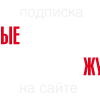 |
 |
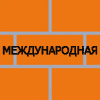 |
 |
 |
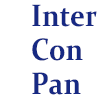 |
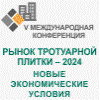 |
